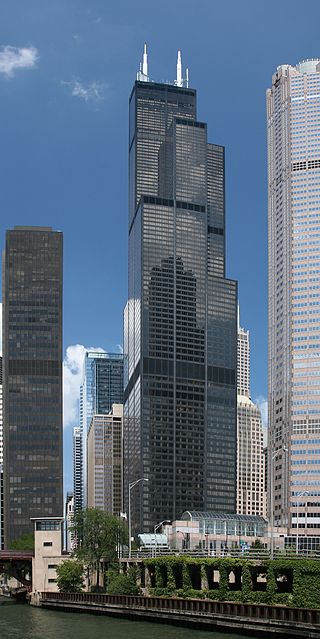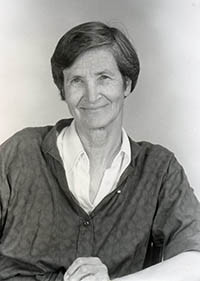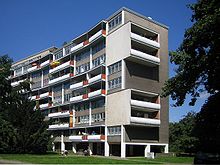
Modern architecture, or modernist architecture, was an architectural movement or architectural style based upon new and innovative technologies of construction, particularly the use of glass, steel, and reinforced concrete; the idea that form should follow function (functionalism); an embrace of minimalism; and a rejection of ornament. It emerged in the first half of the 20th century and became dominant after World War II until the 1980s, when it was gradually replaced as the principal style for institutional and corporate buildings by postmodern architecture. According to Le Corbusier the roots of the movement were to be found in the works of Eugène Viollet le duc.
This is a timeline of architecture, indexing the individual year in architecture pages. Notable events in architecture and related disciplines including structural engineering, landscape architecture, and city planning. One significant architectural achievement is listed for each year.
The year 1973 in architecture involved some significant architectural events and new buildings.
The year 1969 in architecture involved some significant architectural events and new buildings.
The year 1958 in architecture involved some significant architectural events and new buildings.
The year 2003 in architecture involved some significant architectural events and new buildings.
The year 1998 in architecture involved some significant architectural events and new buildings.
The year 1972 in architecture involved some significant architectural events and new buildings.
The year 1963 in architecture involved some significant architectural events and new buildings.
The year 1967 in architecture involved some significant architectural events and new buildings.
The year 1885 in architecture involved some significant architectural events and new buildings.
The year 1953 in architecture involved some significant events.
The year 1898 in architecture involved some significant architectural events and new buildings.
The year 1970 in architecture involved some significant architectural events and new buildings.

The buildings and architecture of Chicago reflect the city's history and multicultural heritage, featuring prominent buildings in a variety of styles. Most structures downtown were destroyed by the Great Chicago Fire in 1871.

Marcel Lajos Breuer, was a Hungarian-German modernist architect and furniture designer. He moved to the United States in 1937 and became a naturalized American citizen in 1944.

Women in architecture have been documented for many centuries, as professional practitioners, educators and clients. Since architecture became organized as a profession in 1857, the number of women in architecture has been low. At the end of the 19th century, starting in Finland, certain schools of architecture in Europe began to admit women to their programmes of study. In 1980 M. Rosaria Piomelli, born in Italy, became the first woman to hold a deanship of any school of architecture in the United States, as Dean of the City College of New York School of Architecture. In recent years, women have begun to achieve wider recognition within the profession, however, the percentage receiving awards for their work remains low. As of 2023, 11.5% of Pritzker Prize Laureates have been female.

Natalie Griffin de Blois was an American architect. Entering the field in 1944, she became one of the earliest prominent woman in the male-dominated profession. She was a partner for many years in the firm of Skidmore, Owings and Merrill. Her notable works include the Pepsi Cola Headquarters, Lever House, and the Union Carbide Building in New York City, the Equitable Building in Chicago, the low-rise portions of the Ford World Headquarters in Dearborn, Michigan, and the Connecticut General Life Insurance Company Headquarters in Bloomfield, Connecticut. Several of de Blois' buildings are among the tallest woman-designed buildings in the world. She later taught architecture at the University of Texas in the 1980s and 1990s.
The year 2015 in architecture involved some significant architectural events and new buildings.








